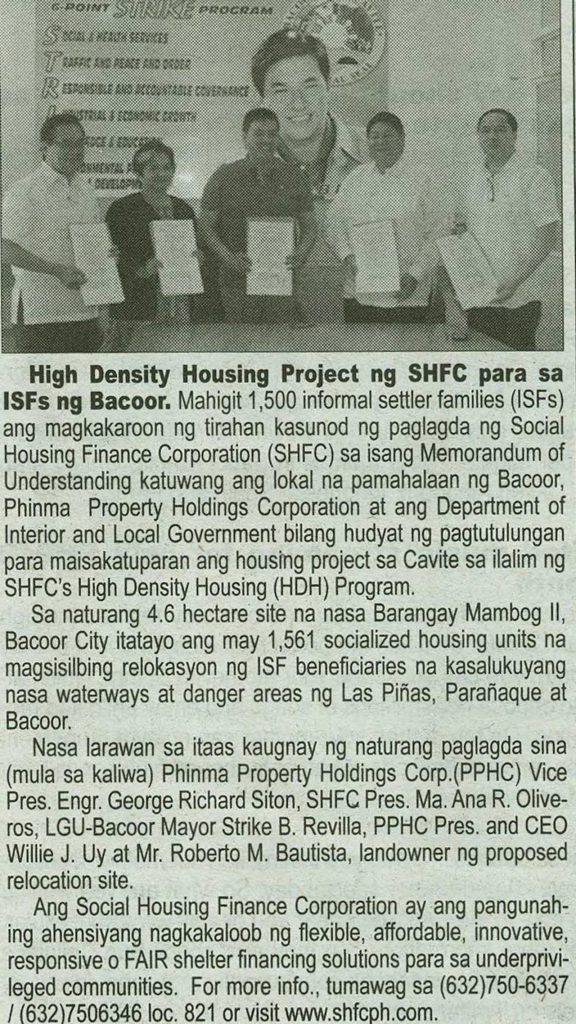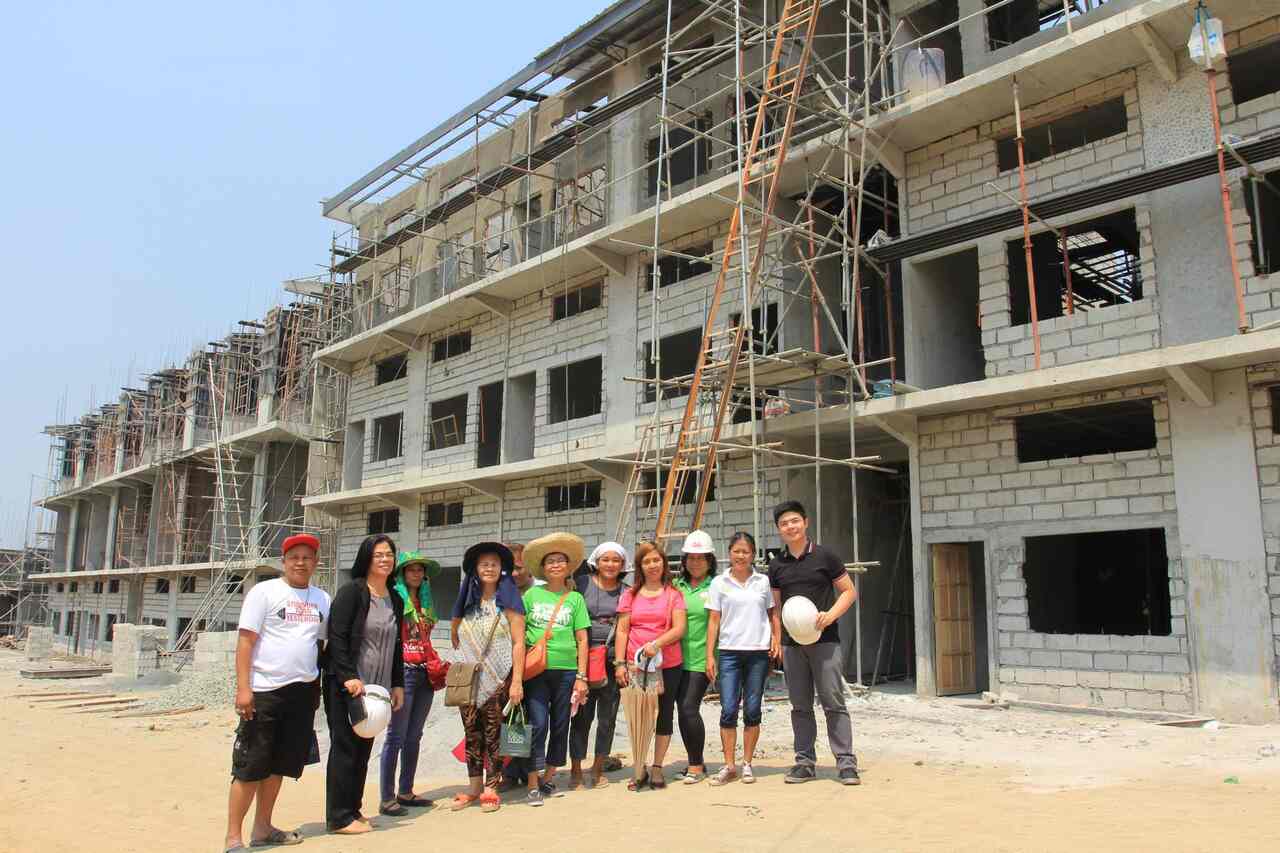The High Density Housing (HDH) Program is a flagship initiative of the Social Housing Finance Corporation (SHFC) designed to provide affordable, disaster-resilient, and secure vertical housing solutions for low-income families, especially in highly urbanized and hazard-prone areas. Launched in 2011, the program was created in response to the growing need for in-city and near-city resettlement, particularly for informal settler families (ISFs) living in danger zones such as waterways, esteros, and other high-risk areas. Rooted in Republic Act No. 7279 or the Urban Development and Housing Act of 1992, the HDH Program aligns with the government’s broader goal of inclusive urban development and sustainable human settlements.
Understanding the HDH Program is essential because it empowers marginalized communities to access secure housing without being displaced far from their sources of livelihood and basic services. The application procedures under this program emphasize community participation, where organized communities—often through people’s organizations or homeowners’ associations—can initiate and manage their own housing projects with assistance from SHFC. If you are part of a community association seeking long-term housing solutions in Metro Manila, the SHFC HDH offers a structured path to secure affordable, flood-resilient housing to informal settler families (ISFs) living in danger zones by providing multi-storey housing options through a community-driven process. This guide will tell you how to apply for the program, along with the eligibility requirements, loan details, and step-by-step procedures.
SHFC High Density Housing Program (HDH)

The HDH is a government-led initiative that aims to provide affordable mid-rise or high-rise residential buildings for low-income families, particularly in congested urban areas. It addresses the housing needs of informal settler families (ISFs) living in danger zones by offering in-city or near-city relocation options that are accessible, safe, and sustainable. Implemented by the SHFC, the program supports inclusive urban development and community-driven housing solutions.
It is part of the SHFC’s efforts to support the national housing program for ISFs in the National Capital Region (NCR). With a five-year P50-billion budget, the HDH initiative promotes in-city or near-site relocation by developing multi-storey buildings. These projects are executed in coordination with community associations, civil society groups, LGUs, and private sector partners.
Program Objectives
It was designed primarily to serve the following purposes:
- To provide flood-resilient, permanent housing
- Offer in-city or near-site housing through land-sharing or slum redevelopment
- Encourage community participation using SHFC’s Community Mortgage Program (CMP) framework
Program Features
Some of the notable features of the HDH Program are as follows:
Loan Details and Entitlement
- Maximum loan amount: P450,000 per family (subject to HUDCC-approved ceilings)
- Loan purposes: Land acquisition, site development, or building construction
- Interest rate: 4.5% per annum
- Loan term: Up to 30 years
Loan Options
- Land Acquisition + Building Construction: If land is purchased and developed under one loan.
- Building Construction Only: If land is donated, leased, or under a 30-year usufruct agreement.
Repayment Scheme
- Graduated amortization for the first 10 years (10% annual increase), fixed thereafter
- One-month grace period from occupancy
- Option for a Rent-to-Own scheme (valid for 5 years)
Tenurial Arrangements
- Usufruct
- Condominium Certificate of Title (CCT)
- Other SHFC-approved arrangements
Benefits
The program offers a range of features and benefits aimed at providing secure, affordable, and sustainable housing solutions for low-income families in urban areas:
- Affordable housing packages with flexible and low-interest financing terms.
- Vertical housing solutions (e.g., mid-rise and high-rise buildings) ideal for limited urban spaces.
- Disaster-resilient infrastructure designed to withstand floods, earthquakes, and other hazards.
- In-city or near-city resettlement to keep families close to their workplaces, schools, and essential services.
- Community-driven development approach empowering organized groups to plan and implement housing projects.
- Access to technical assistance from SHFC and partner agencies for project planning, design, and management.
- Security of land tenure through long-term ownership or leasehold arrangements.
- Inclusive and participatory process promoting transparency and social cohesion among beneficiaries.
Who Can Apply?
The program is designed to benefit the following groups:
- Informal Settler Families (ISFs) living in danger zones such as waterways, railways, sidewalks, and other hazardous areas
- Low-income families in urban and highly urbanized areas with limited access to decent housing
- ISFs affected by government infrastructure projects and development programs
- ISFs residing in government or privately-owned lands without formal tenure
- Relocated families from off-city resettlement areas seeking in-city or near-city housing solutions
- Organized community associations or people’s organizations (POs) representing marginalized urban poor groups
Eligible beneficiaries include community associations composed of informal settler families residing in danger zones and waterways in highly urbanized areas within NCR.
Qualifications
To qualify for the program, target beneficiary groups must meet the following eligibility criteria:
- Must belong to organized community associations such as homeowners’ associations (HOAs) or cooperatives.
- Composed primarily of low-income and informal settler families (ISFs) residing in danger areas, disaster-prone zones, or government infrastructure project sites.
- Legal capacity to enter into a contract and engage in collective housing undertakings.
- Willing to participate in community-driven housing development processes.
- Must be able to pay counterpart equity or amortization contributions, as required under program guidelines.
- Must undergo social preparation and capacity-building activities facilitated by SHFC or its accredited partners.
Required Documents
To apply, interested applicants will need the following documents:
Application Requirements
- Land Acquisition Documents
- Masterlist of beneficiaries (HDH 01 Form)
- Incorporation papers and bylaws
- Project management structure and DILG Certificate
- Land title and zoning documents
- Site investigation and appraisal
- Conceptual plans and people’s proposal
- Mortgage Requirements:
- Certified true copies of land title
- Letter of Intent to Sell (HDH 02 Form)
- Board resolutions and tax clearance
- SPA and purchase authorization documents
- Site Development Requirements:
- Subdivision plans, road and drainage plans, utility system plans
- Bill of materials and cost estimates
- Work programs and cash flow
- Development permits
- Building Construction Requirements:
- Architectural and structural plans
- Building permits and contractor agreements
- Contractor eligibility documents
- Audited financial reports (last 2 years)
Loan Release Requirements
- Land Acquisition:
- Signed Loan Agreement (HDH 04 Form), Real Estate Mortgage (HDH 05), Promissory Note (HDH 06), Guarantee Letter (HDH 07)
- Deed of Sale, title and tax declaration in the CA’s name
- Building Construction (Tranche-based release):
- 15% Mobilization Fund upon SHFC approval
- Subsequent tranches based on work progress and documentation
- Performance and Compliance
- Developers must submit a Performance Bond
- Retention fee (10%) held until SHFC validates the project completion
- SHFC may retain land ownership and sell only the building or co-own both under a rental scheme for low-income families
Application Procedures
Applying for the SHFC High Density Housing (HDH) Program involves several key steps to ensure a smooth and community-driven housing development process:
Step 1: Organize a community association such as a Homeowners’ Association (HOA) or Community Association (CA).
Step 2: Submit a Letter of Intent (LOI) to the Social Housing Finance Corporation (SHFC).
Step 3: Conduct social preparation activities including capacity-building, orientation, and consultation sessions.
Step 4: Prepare and submit project proposals detailing site development, architectural design, financing plans, and relocation strategy.
Step 5: Undergo SHFC project evaluation and approval process to assess feasibility, compliance, and eligibility.
Step 6: Sign a loan agreement and other legal documents once the project is approved.
Step 7: Start project implementation including construction and monitoring of housing development.
Step 8: Facilitate move-in and occupancy procedures once housing units are ready for turnover.
Why are Community Associations (CAs) Necessary?
It is important that a community association is organized first because it will help:
- Identify and profile beneficiaries
- Manage resources and documentation
- Develop project plans and oversee implementation
- Handle estate management, including payment collections and building maintenance
- Manage taxes, permits, and organizational maintenance
Video: AMVACA Housing—SHFC HDH Program
The HDH Program by SHFC provides a structured pathway for ISFs to access dignified housing in urban areas. While the process involves several documentation and organizational steps, the long-term benefits include safe housing and secure tenure. Four years ago, for instance, the members of the AMVACA Housing Cooperative used to fight with a demolition team, imposing threat to their shanties, situated along the waterways of Tullahan River in Valenzuela City. With the SHFC’s High Density Housing (HDH) Program and support from private partners and the government, the community’s dream of having their own homes is coming true. Watch this video to learn more about how it helped provide safer, cost-effective, near site, in-city or near-city relocation housing to ISFs in the National Capital Region:
For more information, visit the SHFC website or contact your the SHFC office via facebook.com/shfcph. You may also reach them through (+632) 750-6346 loc. 432 from 8:00 AM-5:00 PM, Mondays thru Fridays.
